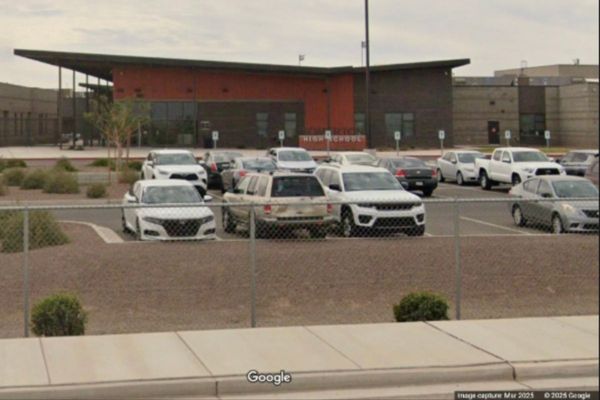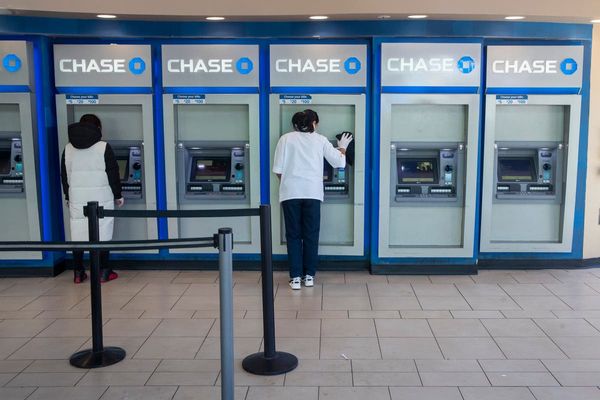
Shares in The Warehouse Group slumped to a new low in the face of recession fears, but there are hopes the Red Shed's increased grocery sales will give Kiwi more competitive food prices.
It was a case of both good and bad news on the inflation front last week.
The Consumers Price Index rose just 1.2 percent in the March quarter, which saw the annual inflation rate decline to 6.7 percent per annum – the slowest annual rate in over a year. The result was markedly weaker than the market expectation of 7.1 percent per annum.
That was the good news.
READ MORE: * The Detail: The price pain of supermarket shopping * Supermarket promotions cost less but our health pays * Why the cheapest thing since sliced bread is – sliced bread
The bad news for local consumers was that domestic (non-tradeable) inflation remains as hot as ever leading to a wide range of forecasts by economists about how quickly inflation will return to the Reserve Bank’s target band of 1 to 3 percent.
Kiwibank chief economist Jarred Kerr is confident of a return to target within 12 months.
“We continue to forecast an easing in the inflation rate towards 3.3 percent by year-end. Prices are still rising, but at a much more reasonable rate. If we’re right, inflation will be back within the Reserve Bank’s 1-to-3 percent year-on-year target band early in 2024. Job done.”
But Kerr notes food inflation continues to be the pinch point and the one consumers notice the most, particularly when it comes to the weekly supermarket shop.
“Food price inflation saw a whopping 3.7 percent gain in the latest quarter. Devastated crops in the Hawke’s Bay will take years to recover. Construction related costs are also still too high, although they have moderated a touch. And the rebuild from the flooding and cyclone will prove to be inflationary.”
“When we look at local prices (non-tradables) we see an awkward lift from 6.6 percent to 6.8 percent. Although the all-important core measures have eased from ~6.4-to-6.6 percent previously to 5.9-to-6.1 percent.”
Despite the better than expected result, Kerr says the Reserve Bank still has more work to do.
“While this result should bolster the Reserve Bank’s view that it is near the end of the raising cycle, a question remains over whether it has done enough to slay the inflation dragon. With the level of non-tradables inflation still high, that battle isn’t over yet.”
Infometrics principal economist Brad Olsen says it is yet to release its revised forecast for when the CPI will return to within its target band, but he estimates that return might not be until mid-to-late 2024.
“There’s another boost to inflation expected when the government ends the fuel tax subsidy later this year, and even before that, non-tradables (domestically based) inflation accelerated at its fastest pace in the most recent quarter.”
“If global fuel prices pitch higher, there’s a risk that tradables inflation rises too at some stage, keeping inflation more intense. Either way, we are not yet confident of a swift and easy pathway to lower inflation.”
Adding to growing concerns about the outlook for the second half of the year, the looming recession is being tipped to be twice as deep as previously thought, with kiwis being warned to prepare for a tough rest of the year according to ASB economists.
Their prediction is for gross domestic product (GDP) to contract by 2 percent by early 2024, which is double the 1 percent decline the bank forecast in its previous quarterly update.
And ASB now expects the recession will likely set in earlier than it had previously forecast, according to its latest Economic Outlook. It expects GDP to have contracted 0.6 percent in the December 2022 quarter.
ASB Bank chief economist Nick Tuffley says high-interest rates and inflation will continue to restrain consumer spending in the coming year, with homeowners feeling the strain and pain the most.
“Things have overheated, and the stimulus to get us through the pandemic has been arguably too successful at keeping the economy running along, so now we’re feeling the effects of that and the economy being stretched,” Tuffley says.
In its most recent assessment, the International Monetary Fund also issued a sobering outlook for the New Zealand economy forecasting it will have one of the lowest GDP growth rates while also maintaining one of the highest inflation rates in the Asia-Pacific region in the coming years.
NZ sharemarket edges higher but lacking conviction
The NZ sharemarket recorded a 0.4 percent gain for the week following the better than expected inflation outlook. The NZX50 finished the week at 11,927 as it continues to attempt to push through 12,000, a level it hasn’t been at since February.
The local market is also trading just below its 100 day weekly moving average at 12,050 a level it has struggled with previously.
With a shortened trading week ahead, the NZX50 looks set to finish April largely unchanged for a second consecutive month as investors continue to remain on the sidelines.
In the US investors assessed mixed earnings from corporate America and political negotiations over the country’s debt ceiling leaving the S&P500 index unchanged for the week at 4,133, while the tech heavy Nasdaq Composite fell 0.4 percent.
The moves coincide with lukewarm results from Tesla, which saw its shares slump 11 percent in the face of continued price discounting, and telco giant AT&T missing market estimates for first-quarter revenue and free cash flow, underscoring the toll from strained consumer wallets. A warning about the health of the US consumer from American Express added to the downbeat sentiment.
Additionally, US investors are growing increasingly nervous about the still-remote possibility that the US will default on its debt obligations later this year.
“The Democrats and Republicans seem far apart and investors suspect we will need to see a lot more market stress before adults enter the room,” ING's global head of markets Chris Turner told the Financial Times, noting that the price to insure US government debt against the risk of default this week hit a recent high.
Turner says the weaker tax receipts could bring forward the dates when parts of the US government could begin to shut down which could occur as early as June.
The yield on two-year Treasuries increased to 4.18 per cent, while the yield on the benchmark 10-year note inched up to 3.57 per cent. Yields move inversely to prices.
Concerns over growth mean the Federal Reserve is widely tipped to raise rates for the last time by a quarter percentage point when it next meets in early May, though investors are split on when the US central bank might begin to cut borrowing costs.
US inflation eased last month to its lowest level in nearly two years. Cleveland Federal Reserve president Loretta Mester is the latest Fed official to say that further tightening of monetary policy is likely.
Brent Crude Oil futures ended the week down 5.8 percent at US$81.35 a barrel.
Warehouse shares slump to 27 year low
Shares in The Warehouse Group slumped to a new all-time weekly closing low of $1.71 last week in the face of growing recession fears and continued belt tightening by its core customers.
After hitting a low of $1.41 at the peak of the Covid selloff in March 2020, the shares rallied almost 200 percent over the following 18 months to peak at $4.25 in September 2021 as consumers flocked to online shopping during the lockdown
But since then it’s been all downhill for the country’s largest retailer.
After releasing its half year results a month ago and unexpectedly axing its dividend, Warehouse Group shares have sold off sharply to the point where they are now trading at the same level as in 1996.
Shareholders who have continued to hold the shares over the past two decades have seen their investment decline almost 70 percent in value, compared to Briscoe shareholders who are up more than 240 percent over the same period.
The company has long been seen as a potential third player in the highly competitive grocery sector, and will be pinning its hopes on continuing to grow the category in the future.
Its Red Sheds currently stock a limited range of ‘essential’ grocery items and the retailer noted in its half year update the category had picked up momentum in the last six months with sales increasing by 34 percent. Grocery sales now make up over 22 percent of its total sales.
Banks face new threat to deposits following launch of Apple’s latest financial offering
Apple and US banking giant Goldman Sachs are seeking to lure US depositors to a new savings account by offering to pay interest at more than 10 times the national average rate.
The new savings account yielding a 4.15 percent interest rate is well ahead of the average US savings account rate of 0.37 percent, according to data from the Federal Deposit Insurance Corporation (FDIC). It also outstrips competitors such as American Express which is offering 3.75 per cent and Goldman’s standalone savings account that operates under the Marcus brand, which offers 3.9 per cent.
The launch comes as more established banks, in particular regional and smaller lenders, are under growing pressure to offer better savings rates for depositors to stop them transferring cash to higher-yielding products such as money market funds, which have offered better returns in line with rising interest rates.
It’s estimated bank customers in the US have pulled almost NZ$1 trillion in deposits from commercial banks since March last year when the Fed first started to lift rates after lenders kept deposit rates relatively low while charging more for loans.
The new savings account is being offered to users of Apple’s credit card product, which is also a partnership with Goldman. Apple is offering savers no fees and no minimum deposit requirements. The maximum balance for an account is $250,000. The deposits will sit with Goldman, which as a licensed bank has access to FDIC insurance.










